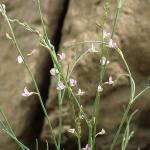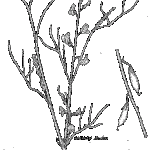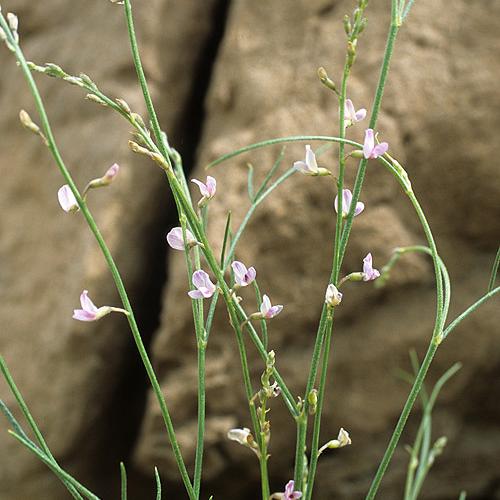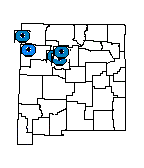Astragalus cliffordii (Clifford's Milkvetch)
Family
FABACEAE
Synonyms
NONE
Common Name
Clifford's Milkvetch
| USFWS | State of NM | USFS | BLM | Navajo Nation | State Rank | Global Rank | R-E-D Code | NMRPTC Status | Strategy Status |
|---|---|---|---|---|---|---|---|---|---|
| S1 | GNR | 3-1-2 | R | SS |
| Overall Conservation Status | Documented Threats | Actions Needed |
|---|---|---|
| UNDER CONSERVED | No Information |
Status surveys on abundance, distribution and threats |
Description
Caulescent perennial, 3.5-6.5 dm tall; basifixed pubescent; stems buried for 1-6 cm, erect-ascending, forming diffuse clumps; stipules 1.5-4.5 mm long, some connate-sheathing; leaves 3.5-6.5 cm long; leaflets 5-7 (9), linear, acute, strigose, 8-28 mm long, 0.4-1 mm wide; peduncles 1.2-12 cm long, racemes loosely 5-19 flowered, ascending; flowers pea-like; calyx 1.8-3 mm long, the tube 1.2-1.8 mm long; petals pale, faintly suffused with purple, 4.3-6.1 mm long; pods declined, 9-12 mm long, the body elliptic to oblong, straight or slightly curved, subinflated, 9-9.8 mm long, 2.5-3 mm wide, compressed, glabrous, unilocular; ovules 4 or 5. Flowers mid May to June.
Similar Species
Astragalus cliffordii can be distinguished from A. wingatanus by the presence of its filiform peduncles and rachis, confluent terminal leaflet, and the tiny pale flowers with lilac penciled lines on the banner.
Distribution
New Mexico: McKinley, Sandoval, San Juan counties. Arizona: Navajo County.
Habitat
Rim rock ledges of the Mesa Verde Group, in sagebrush and pinyon-juniper woodland; 2,070 m (6,800 ft).
Remarks
Astragalus cliffordii is named for Navajo botanist Arnold Clifford.
Conservation Considerations
An inventory of potential habitat in New Mexico is needed to determine its abundance and distribution and whether current land uses pose a threat to this plant.
Important Literature
Welsh, S.L., N.D. Atwood, S. Goodrich and L.C. Higgins. 2003. A Utah Flora, 3rd ed. Monte L. Bean Life Science Museum, Brigham Young University, Provo, Utah.
Information Compiled By
Kenneth D. Heil 2007; updated 2017 (D.Roth)
For distribution maps and more information, visit Natural Heritage New Mexico





